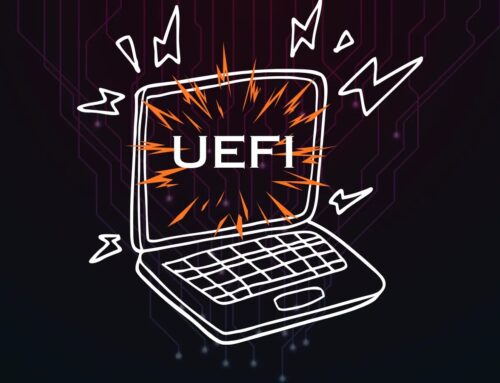
Qilin Ransomware Surging Following The Fall of dominant RansomHub RaaS
The cybersecurity landscape is in constant flux, a relentless battle where new threats emerge as quickly as old ones dissipate. The second quarter of 2025 witnessed a pivotal shift: the dramatic rise of Qilin ransomware, seizing the void left by the unexpected collapse of RansomHub, previously the most prolific Ransomware-as-a-Service (RaaS) operation. This significant disruption has reshaped the cybercriminal ecosystem, a clear signal that organizations must remain hyper-vigilant and adaptable in their defense strategies.
The Vacuum Left by RansomHub’s Fall and Qilin’s Ascent
For a considerable period, RansomHub dominated the RaaS market, a sophisticated and widely utilized platform for deploying ransomware attacks. Its abrupt cessation of operations in early Q2 2025 created a massive power vacuum within the cybercriminal underworld. This absence wasn’t left unfilled for long. Threat actors, ever opportunistic, quickly migrated to new preferred platforms. Qilin ransomware emerged as the primary beneficiary of this seismic shift, rapidly escalating its operational tempo and becoming the dominant ransomware threat.
This transition highlights a critical aspect of the cybercriminal economy: its inherent resilience and adaptability. When one major player falls, another is always ready to capitalize on the opportunity, often refining tactics or expanding their reach. The speed with which Qilin filled RansomHub’s shoes underscores the urgent need for continuous threat intelligence and dynamic defensive posturing.
Understanding Qilin Ransomware: A Deeper Dive
Qilin, while gaining prominence recently, is not a new entrant to the ransomware scene. It has been active for some time, evolving its capabilities and targeting strategies. Its current surge indicates a matured operation, likely attracting affiliates who previously worked under RansomHub or other dismantled RaaS programs. Key characteristics and operational methods associated with Qilin ransomware often include:
- Double Extortion Tactics: Like many modern ransomware groups, Qilin frequently employs double extortion. This involves not only encrypting files but also exfiltrating sensitive data from victim networks. The threat then becomes two-fold: pay the ransom or face public exposure of stolen data, increasing pressure on victims to comply.
- Targeting Specific Industries: While ransomware can affect any organization, Qilin, in its surging phase, demonstrates a strategic focus on high-value targets. These often include critical infrastructure, financial services, healthcare, and manufacturing, sectors where downtime or data breaches have severe consequences.
- Advanced Persistent Threat (APT) Like Behavior: Qilin operations often exhibit characteristics of advanced persistent threats, involving meticulous reconnaissance, lateral movement within networks, and persistence mechanisms to ensure maximum impact. This is not typically a “spray and pray” operation but rather a targeted and methodical attack.
Implications for Cybersecurity Preparedness
The rise of Qilin ransomware following RansomHub’s demise carries significant implications for organizations globally. It serves as a stark reminder that complacency is a luxury no enterprise can afford.
- Evolving Threat Landscape: The rapid shift in ransomware dominance proves that the threat landscape is highly dynamic. Organizations must continually update their threat intelligence to understand the latest actors, their tactics, techniques, and procedures (TTPs).
- RaaS Model Persistence: The RaaS model remains highly effective for cybercriminals, lowering the barrier to entry for aspiring attackers. The collapse of one major provider only leads to the rise of another, reinforcing the need for foundational security measures.
- Increased Ransom Demands and Data Exposure Risk: With Qilin’s focus on high-value targets and double extortion, organizations face potentially higher ransom demands and a greater risk of sensitive data exposure following a breach.
Remediation and Mitigation Actions Against Ransomware Threats
Defending against sophisticated ransomware operations like Qilin requires a multi-layered, proactive approach. Organizations must prioritize robust security fundamentals and adapt to the evolving threat landscape.
- Implement Strong Backup and Recovery Strategies: Regularly back up all critical data, ensuring backups are immutable, isolated from the network (e.g., air-gapped or immutable cloud storage), and frequently tested for recovery success. This is a primary defense against encryption.
- Enforce Principle of Least Privilege: Limit user access to only the resources absolutely necessary for their job functions. This curtails lateral movement by attackers once they gain initial access.
- Regularly Patch and Update Systems: Keep all operating systems, applications, and network devices patched and up-to-date. Attackers frequently exploit known vulnerabilities (e.g., often tracked by CVE-XXXX-XXXXX numbers) to gain initial access or escalate privileges.
- Deploy Advanced Endpoint Detection and Response (EDR)/Extended Detection and Response (XDR): These solutions provide behavioral analysis, threat hunting capabilities, and rapid response to anomalous activities on endpoints, helping detect and neutralize ransomware before encryption.
- Implement Network Segmentation: Segment networks to restrict lateral movement. If one part of the network is compromised, the ransomware’s ability to spread to other critical systems is significantly hampered.
- Strengthen Email and Web Security: Implement robust spam filters, attachment scanning, and URL filtering to block phishing attempts, which are common initial access vectors for ransomware.
- Conduct Regular Security Awareness Training: Educate employees about phishing, social engineering tactics, and the importance of reporting suspicious activities. A well-informed workforce is a critical line of defense.
- Utilize Multi-Factor Authentication (MFA): Implement MFA for all remote access, privileged accounts, and critical systems. This significantly reduces the risk of credential compromise leading to unauthorized access.
- Perform Penetration Testing and Vulnerability Assessments: Regularly test defenses to identify weaknesses and prioritize remediation efforts before attackers exploit them.
Conclusion: Adapting to the New Reality
The rise of Qilin ransomware serves as a powerful testament to the dynamic nature of cyber threats. While RansomHub’s collapse temporarily disrupted the RaaS ecosystem, the rapid emergence of Qilin demonstrates the resilience and adaptability of cybercriminal enterprises. For organizations, this means an unceasing commitment to robust cybersecurity hygiene, continuous threat intelligence, and a proactive posture. Defending against modern ransomware is not a static challenge but an ongoing strategic imperative, demanding vigilance, investment, and a holistic security approach.





